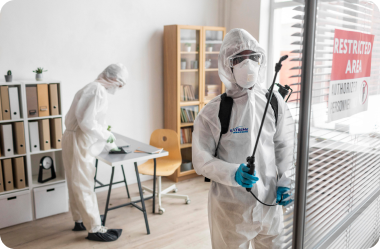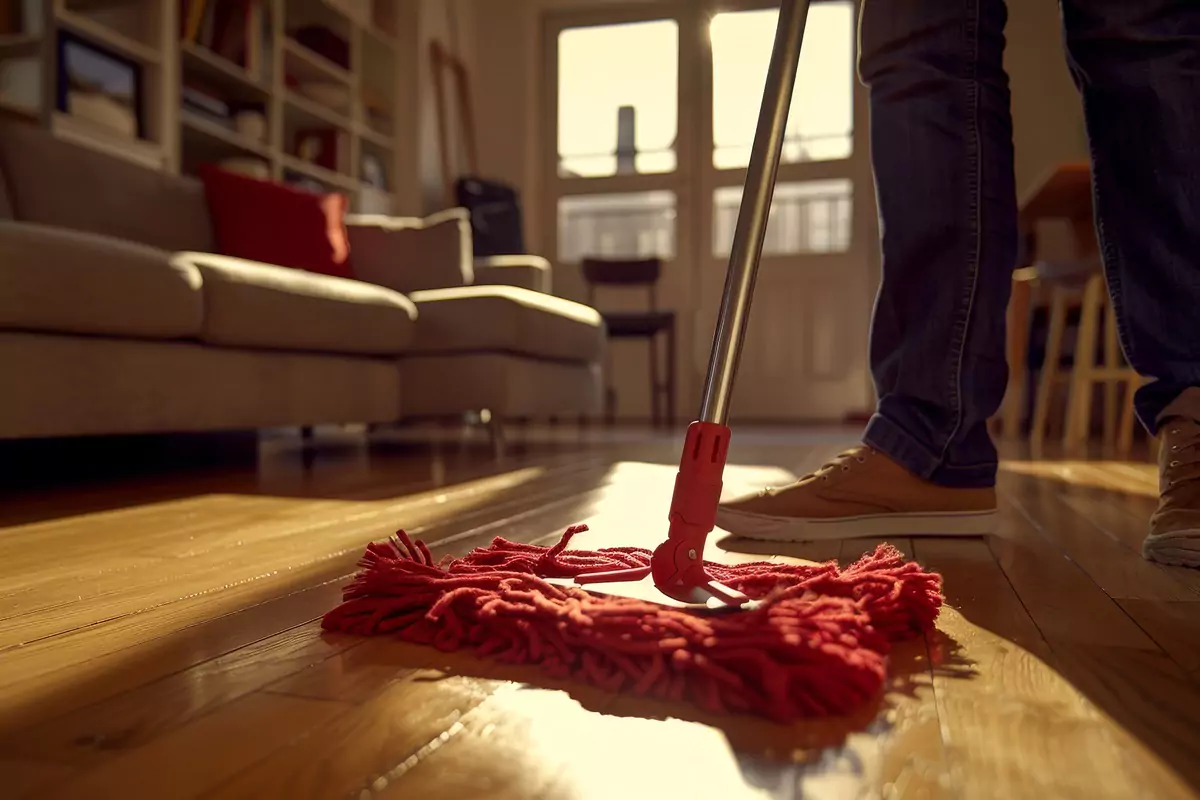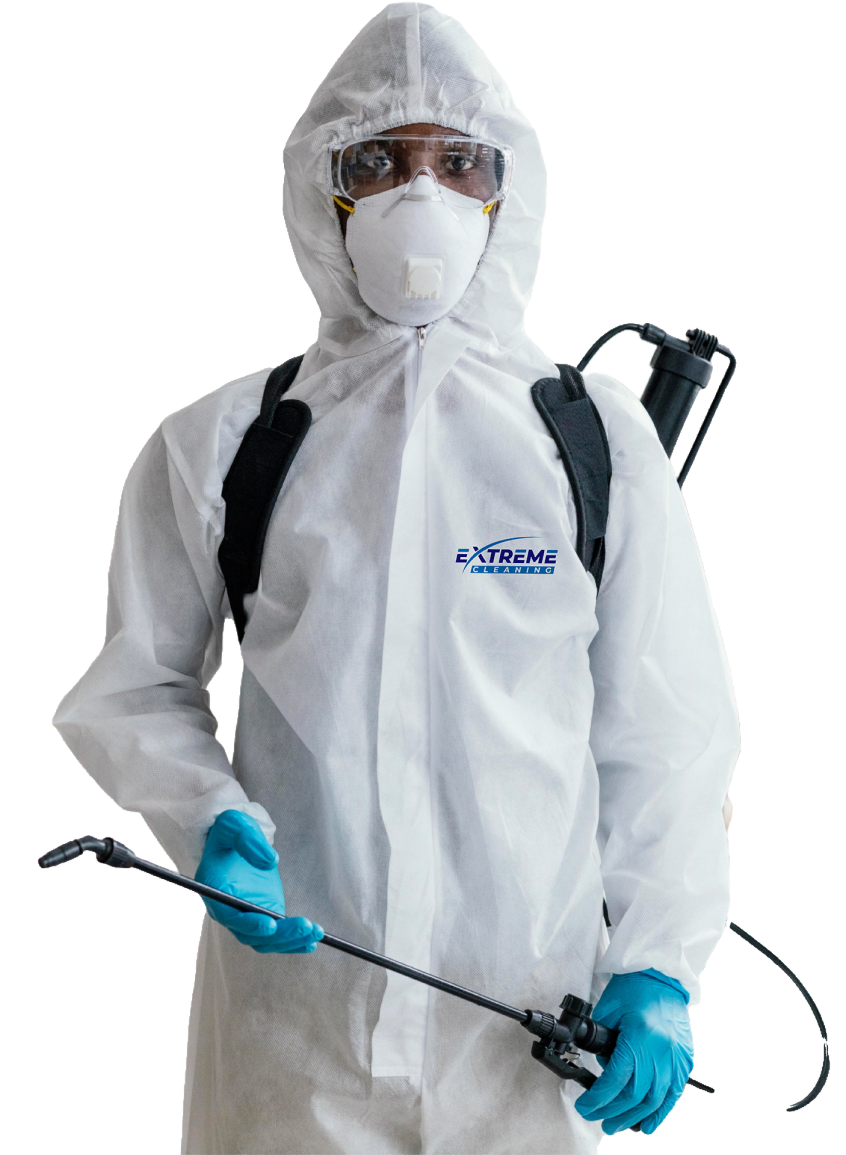Maintaining a clean and hygienic office environment is paramount for the health, productivity, and morale of employees. While regular cleaning routines keep the office tidy on a day-to-day basis, deep cleaning tackles the deeper dirt, grime, and allergens that accumulate over time. This detailed guide will provide comprehensive advice on how often to deep clean office furniture and flooring, ensuring a pristine and conducive workspace.
Importance of Deep Cleaning
Deep cleaning involves thorough cleaning that goes beyond the surface. It includes areas that are often missed during regular cleaning, such as underneath furniture, high-touch points, and hidden nooks. Here are a few reasons why deep cleaning is essential:
- Health Benefits: Reduces allergens, bacteria, and viruses, thereby lowering the chances of illnesses.
- Aesthetic Appeal: Maintains the appearance of the office, making it look welcoming and professional.
- Prolongs Longevity: Helps in maintaining and prolonging the lifespan of office furniture and flooring.
- Productivity: A clean environment boosts employee morale and productivity.
Office Furniture
Desks and Workstations
Frequency: Every 3-6 months
Reason: Desks and workstations are high-use areas where dust, allergens, and germs can accumulate. Regular deep cleaning helps ensure a healthy workspace and can enhance the lifespan of the furniture.
Deep Cleaning Steps:
- Clear the Surface: Remove all items from the desk.
- Dusting: Use a microfiber cloth to dust the entire surface, including edges and corners.
- Disinfecting: Apply a disinfectant solution to clean and sanitise the surface, paying special attention to high-touch areas such as keyboard and mouse.
- Organising: Organise items back onto the desk in a neat and orderly fashion.
Chairs
Frequency: Every 6 months
Reason: Office chairs, particularly the upholstery, can collect dirt, sweat, and bacteria. Regular deep cleaning is crucial for hygiene and to maintain the chair’s appearance and functionality.
Deep Cleaning Steps:
- Vacuuming: Use a vacuum with an upholstery attachment to remove dust and debris.
- Spot Cleaning: Treat stains with appropriate upholstery cleaner.
- Disinfecting: Wipe down hard surfaces (armrests, base) with a disinfectant.
- Conditioning: For leather chairs, apply a leather conditioner to keep the material supple.
Soft Furnishings (Sofas, Cushions, etc.)
Frequency: Every 6-12 months
Reason: Soft furnishings in common areas trap dust, allergens, and odours. Regular deep cleaning keeps them fresh and inviting.
Deep Cleaning Steps:
- Vacuuming: Use a vacuum with appropriate attachments for soft furnishings.
- Stain Removal: Apply stain removers to any visible spots or stains.
- Shampooing: Use a fabric shampoo or steam cleaner for a deep clean.
- Air Drying: Allow the furniture to air dry completely before use.
Storage Units and Cabinets
Frequency: Annually
Reason: These areas are not used as frequently, but they can gather dust and require annual attention to ensure cleanliness and orderliness.
Deep Cleaning Steps:
- Emptying: Remove all items from storage units and cabinets.
- Dusting: Dust all surfaces, including shelves and doors.
- Cleaning: Wipe down with a mild cleaner.
- Organising: Replace items in an organised manner, discarding or recycling any unnecessary items.
Flooring
Carpeted Floors
Frequency: Every 6-12 months
Reason: Carpets trap dust, dirt, and allergens deep within their fibres. Regular deep cleaning helps maintain a healthy indoor environment and prolongs the carpet’s life.
Deep Cleaning Steps:
- Vacuuming: Thoroughly vacuum the carpet to remove surface dirt.
- Spot Cleaning: Treat stains with a suitable carpet stain remover.
- Steam Cleaning: Use a steam cleaner to deep clean the carpet, removing deep-seated dirt and allergens.
- Drying: Allow the carpet to dry completely before allowing foot traffic.
Hardwood Floors
Frequency: Every 3-6 months
Reason: Hardwood floors need regular deep cleaning to remove dirt and grime that can cause scratches and damage, maintaining their natural shine and beauty.
Deep Cleaning Steps:
- Dust Mopping: Use a dust mop or vacuum to remove loose dirt and debris.
- Mopping: Clean with a damp mop and a cleaner specifically designed for hardwood floors.
- Polishing: Apply a polish or wax to restore the floor’s shine.
- Buffing: Buff the floor to a high shine, if necessary.
Vinyl and Laminate Floors
Frequency: Every 6 months
Reason: These types of flooring are durable but can accumulate dirt and stains. Regular deep cleaning ensures they remain in good condition and hygienic.
Deep Cleaning Steps:
- Sweeping: Sweep or vacuum to remove loose dirt.
- Mopping: Mop with a solution suitable for vinyl or laminate floors.
- Stain Removal: Treat any stains with appropriate cleaners.
- Drying: Ensure the floor is thoroughly dried to prevent water damage.
Tile and Grout
Frequency: Every 6-12 months
Reason: Tiles and grout can become stained and harbour mould and bacteria. Deep cleaning helps maintain their appearance and hygiene.
Deep Cleaning Steps:
- Sweeping: Sweep or vacuum the floor to remove loose debris.
- Mopping: Mop with a tile and grout cleaner.
- Scrubbing: Use a brush to scrub the grout lines.
- Sealing: Apply a grout sealer to protect against future stains and mould.
High-Traffic Areas
High-traffic areas such as entrances, hallways, and common areas require more frequent deep cleaning due to higher usage. Here’s a recommended schedule:
- Entrances and Hallways: Every 3 months
- Common Areas (Break rooms, Meeting rooms): Every 3-6 months
Additional Tips for High-Traffic Areas
- Use entry mats: Place mats at entrances to reduce the amount of dirt tracked into the office.
- Frequent spot cleaning: Address spills and stains immediately to prevent them from becoming permanent.
- Rotate cleaning tasks: Ensure that high-traffic areas are included in regular cleaning rotations.
Deep Cleaning Checklist
A comprehensive checklist can ensure that no areas are missed during deep cleaning. Here’s a sample checklist:
| Area | Task | Frequency |
|---|---|---|
| Desks and Workstations | Dust, disinfect, organise | Every 3-6 months |
| Chairs | Vacuum, spot clean, disinfect | Every 6 months |
| Soft Furnishings | Vacuum, stain removal, shampoo | Every 6-12 months |
| Storage Units/Cabinets | Empty, dust, clean, organise | Annually |
| Carpeted Floors | Vacuum, spot clean, steam clean | Every 6-12 months |
| Hardwood Floors | Dust mop, mop, polish, buff | Every 3-6 months |
| Vinyl/Laminate Floors | Sweep, mop, stain removal, dry | Every 6 months |
| Tile and Grout | Sweep, mop, scrub, seal | Every 6-12 months |
| High-Traffic Areas | Deep clean, spot clean, rotate tasks | Every 3 months |
Benefits of Hiring Professional Services
While regular in-house cleaning can manage daily upkeep, hiring professional cleaning services for deep cleaning offers several advantages:
- Expertise: Professional cleaners have the expertise and equipment to perform thorough deep cleaning.
- Efficiency: They can complete the job more efficiently, reducing disruption to office activities.
- Specialised Cleaning: Professionals can handle specialised cleaning tasks such as upholstery cleaning, carpet steaming, and tile and grout scrubbing.
- Consistency: Regularly scheduled professional cleaning ensures consistency and thoroughness.
Creating a Cleaning Schedule
A well-planned cleaning schedule helps in maintaining a consistent cleaning routine. Here’s an example of how to structure a quarterly cleaning schedule:
Quarterly Cleaning Schedule
| Quarter | Task | Area |
|---|---|---|
| Q1 | Deep clean desks and workstations, chairs | Entire office |
| Deep clean carpeted floors | Common areas, hallways | |
| Spot clean high-traffic areas | Entrances, hallways | |
| Q2 | Deep clean soft furnishings | Break rooms, reception |
| Deep clean hardwood floors | Meeting rooms, offices | |
| Deep clean tile and grout | Restrooms, kitchens | |
| Q3 | Deep clean storage units and cabinets | Entire office |
| Deep clean vinyl and laminate floors | Break rooms, kitchens | |
| Spot clean high-traffic areas | Entrances, hallways | |
| Q4 | Review and assess overall cleaning needs | Entire office |
| Perform additional deep cleaning as needed | High-traffic areas |
Tips for Effective Scheduling
- Flexibility: Adjust the schedule based on specific office needs and seasonal variations.
- Staff Involvement: Encourage staff to maintain their workspaces and report any cleaning issues.
- Regular Audits: Conduct regular audits to ensure cleaning standards are maintained.
Conclusion
Maintaining a clean and hygienic office environment through regular and deep cleaning is essential for the well-being and productivity of employees. By following the guidelines outlined
in this article, you can ensure that your office furniture and flooring remain in excellent condition, promoting a healthy and inviting workplace. Regular deep cleaning not only improves the aesthetic appeal of the office but also extends the lifespan of your furniture and flooring, making it a worthwhile investment.
By incorporating these practices into your cleaning routine, you create a workspace that supports health, productivity, and a positive atmosphere for everyone in the office.




